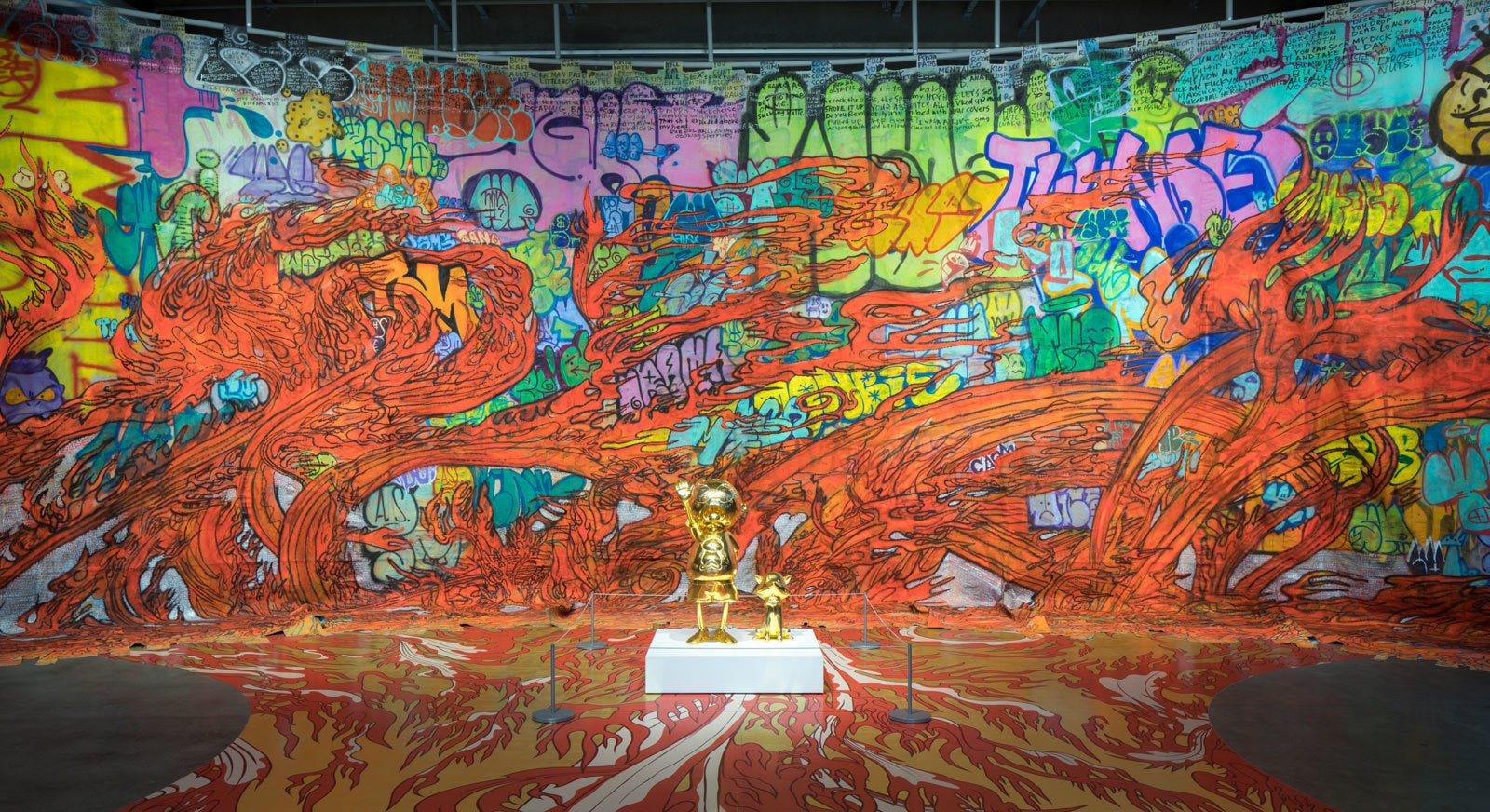Takashi Murakami on Japanese graffiti
On Instagram, the artist tells the story behind his installation for Garage Atrium and his collaborations with Japanese graffiti artists.
Takashi Murakami: Right now, I am working on preparing an installation piece for my solo show at the Garage (Moscow) @garagemca in collaboration with MADSAKI @madsaki, his friend, and other Japanese graffiti artists,
@fukitalltokyo @tengaone @onezker and have been posting the progress on Instagram. Whenever I post images of MADSAKI's and snipe1’s works, some people post “TOY” or “No skill” in the comments. I didn’t get this, so I asked Takumi Kaseno, @ksnyang who handles graffiti-related projects at Kaikai Kiki, @kaikaikikigallery what this was all about. “Oh, that means they are dissing these artists,” he said. “Graffiti in the US is very refined and they tend to emphasize skill. I think they are dissing the artists from that perspective. But in Europe, the permissive range is wider- while some works are very skillfully executed, there are also artists who make works that are characterized as ‘toy' or ‘trash’—worthless—but who actively adopt the dirtiness or childishness as their preferred styles. I don’t think you should simply take it negatively when someone disses your work as ‘toy.' MADSAKI and snipe1 have both lived in the US for many years, so perhaps they are saying it’s pathetic that they haven’t managed to prioritize their skills following the American way. But there are others, like UFO, @ufo907 who have always made ‘toy' works; after many years of making such works without any shame, it has become their style. So while probably those commenting on your Instagram posts are dissing the artists, their values aren’t absolute."
I see, that makes sense.
But I’m more concerned about the artists’ subjective views, that is: What are the realities for the Japanese graffiti artists? When I met MADSAKI, he was already presenting his “Wannabe” series, in which he spray painted historical masterpieces on canvas. It was already different from what you think of as street art, and our relationship started when I bought one of his works from this series.
When he was younger in the US, he was part of a group called Barnstormers, led by David Ellis, but he had to return to Japan at one point. Back in Japan, he was exploring his style by spraying lewd jokes and fashion logos on small panels because, as I understand it, inventing a style is very important for a graffiti artist. But I think when you start painting on canvas—that is, when you step into the context of contemporary art—you are no longer merely talking about style. Of course, artists like the late Basquiat and Keith Haring had their intense styles, but I thought MADSAKI had to dig deeper into the bottom of his heart, to find something like the origin of his creativity. So I discussed this and other things with him and found out that his relationship with his wife was at a precarious place at the time. I then suggested to him that he paint his wife, and that’s how his “Wife” series started. At that point, perhaps you could say he was no longer a street artist or a graffiti artist.
The “Wife” series, painted in his unrefined style, has been very well received, and MADSAKI is gradually gaining confidence of a kind. But to begin with, are refined skills in the street art sense of the word really necessary?
We can’t deny that Japanese graffiti began as imitations of American and European graffitis. But there’s no rule that says one shouldn’t depict mundane themes from one’s daily life in graffiti style like MADSAKI does. I think original artistic expressions can emerge when you combine personal narratives and the Japanese graffiti style. In that sense, the comments such as “toy” and “no skill” may actually be the gospel that points to the future of Japanese graffiti.
